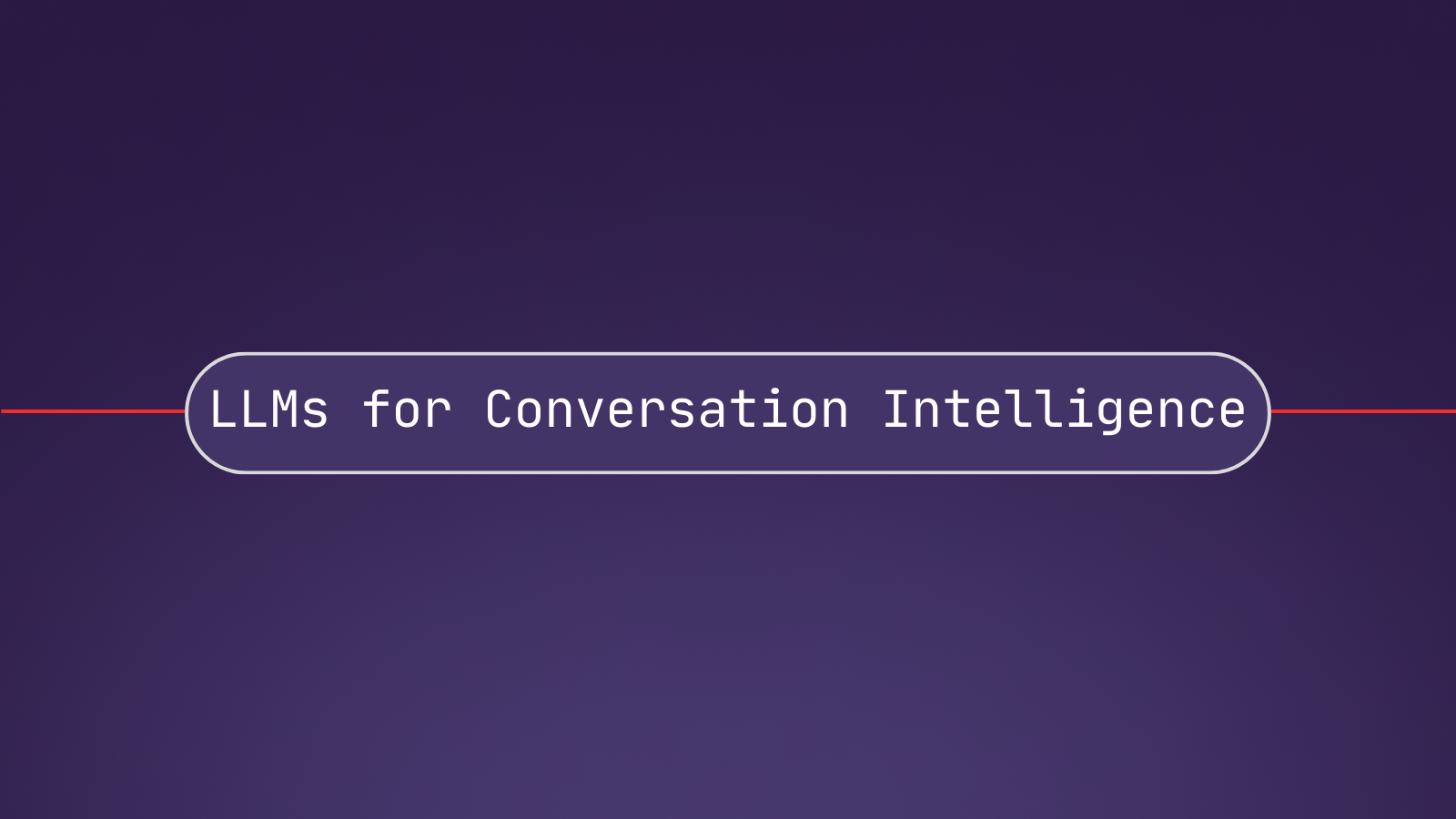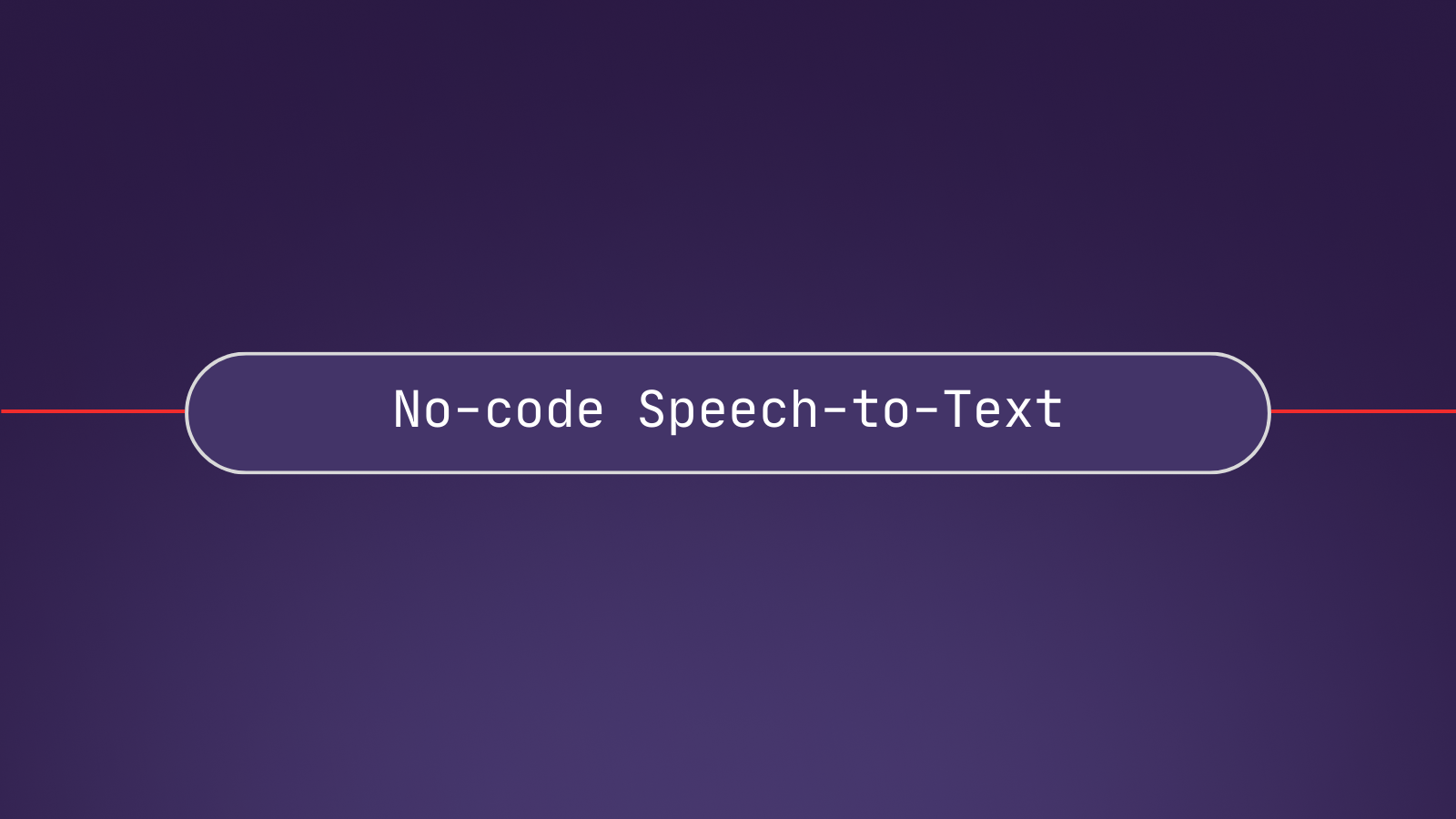Large Language Models (LLMs) are revolutionizing how humans and Artificial Intelligence (AI) interact. ChatGPT, for example, can have context-relevant conversations with users and even help with tasks such as writing articles, calculating complex mathematical calculations, and generating code.
The field of Conversation Intelligence is especially poised to capitalize on LLMs, which can synthesize vast amounts of conversation data very quickly.
In this article, we’ll explore what Conversation Intelligence platforms and Large Language Models are before examining the top benefits of integrating LLMs for Conversation Intelligence platforms.
What are Conversation Intelligence platforms?
89% of marketers agree that Conversation Intelligence tools will be key to staying competitive in today’s data-saturated environment.
Conversation Intelligence platforms are an easy way for end users and companies to access these tools. They typically include tools that:
- Integrate with virtual meeting providers like Zoom and Google Meet and record all specified calls
- Transcribe calls
- Analyze individual and aggregate call data to extract actionable insights from conversational data. This may include tools that identify keywords, analyze key areas of conversations, highlight opportunities or areas of concern, and more.
Conversation Intelligence platforms build these tools on top of Speech AI models such as Speech-to-Text transcription, Summarization, Topic Detection, Sentiment Analysis, and more.
Some platforms are also building tools with Large Language Models.
What are Large Language Models, or LLMs?
Large Language Models, or LLMs, are Machine Learning models that understand, generate, and interact with human language.
By leveraging Deep Learning architectures and training on vast amounts of data, LLMs can process and understand more nuance and context in human language than traditional Natural Language Processing (NLP) models.
LLMs also generate text based on input prompts that can be designed to imitate human-like interactions, create original articles or artwork, or perform sophisticated analyses.
The ability of LLMs to quickly process large amounts of data for a wide variety of purposes makes them uniquely suited to the field of Conversation Intelligence.
Top 6 benefits of integrating LLMs for Conversation Intelligence platforms
Product teams looking to differentiate their Conversation Intelligence platform should consider integrating LLMs into new and existing tools.
Here are the top 6 benefits to explore:
1. Better user experience
Conversation Intelligence tools built with LLMs imitate natural, human-like language and, with the correct prompts, provide thoughtful intelligent responses. Together, this ability offers a better experience for end users because they don’t have to sift through technical jargon or complex data to find the results they need.
2. Better customer understanding for end users
Tools built with LLMs make it easier for users to analyze findings from aggregated data across all conversations to help their teams inform strategic decisions surrounding training, branding, and customer satisfaction.
This automated process also removes the inherent errors in human analysis of the same data, as well as makes it possible for teams to analyze every piece of conversational data collected over time, instead of only a sample size.
For example, CallRail is a lead intelligence company that has integrated Speech AI and LLMs to help its customers build more meaningful relationships on sales calls and boost ROI on call tracking. Its AI Conversational Intelligence feature also helps its customers more efficiently process call data at scale by auto-scoring and categorizing key sections of customer calls.
3. More personalized analysis tools
Product teams can also integrate LLMs to offer more personalized analysis tools for end users.
Frameworks for applying LLMs to speech data like LeMUR, for example, offer a Custom Summary endpoint that allows users to customize a summary format instead of receiving a generic summary output. For users analyzing conversational data, this means they could change a summary to highlight the highs and lows of a call, summarize key pain points and responses, or to analyze findings based on all customer data available.
In addition, product teams can use LLMs to build tools that allow users to ask specific questions about conversational data and receive informed responses based on the selected data.
Generative AI-based Conversation Intelligence platform Pathlight, for example, integrated LLMs to build a host of Generative AI tools that perform sophisticated analysis on top of conversational data to extract insights, themes, and trends, or to ask questions about the available data.
4. Deliver cost and time savings to end users
Tools built with LLMs can automate previously manual tasks, like Quality Assurance (QA), leading to significant cost and time savings for end users.
And since LLMs can process vast amounts of data in just minutes, end users will benefit from significant time savings as well.
5. Modify tools quickly
LLMs can be fine-tuned, which allows them to quickly adapt to changing trends, process new information, and perform new tasks.
For product teams at Conversation Intelligence platforms, this means that your tools will always be cutting-edge and up-to-date, giving your product a competitive edge.
6. Make more intelligently informed decisions for end users
Finally, LLMs can be used to build tools that help end users make more intelligently informed decisions. Since LLMs can quickly process all customer and lead conversational data, this leads to increased visibility into overall trends, opinions, what’s working/not working, common topics discussed, etc. End users can then be confident that they are making the most informed decisions possible based on this data analysis.
Leading Conversational Intelligence, sales coaching, and call recording platform, Jiminny, for example, built tools with Speech AI–such as custom summaries, data-driven coaching, and forecasting–that help their customers achieve a 15% higher win rate, on average.
Related Reads: LLMs for Conversation Intelligence platforms
- Large Language Models and Frameworks for Product Managers
- Why Language Models Became Large Language Models and the Hurdles in Developing LLM-based Applications
- Introduction to Large Language Models for Generative AI
- What is Conversational Intelligence AI?
- How CallRail doubled its Conversation Intelligence customers by building with a trusted AI partner
- AI-powered call analytics: How to extract insights from customer conversations








